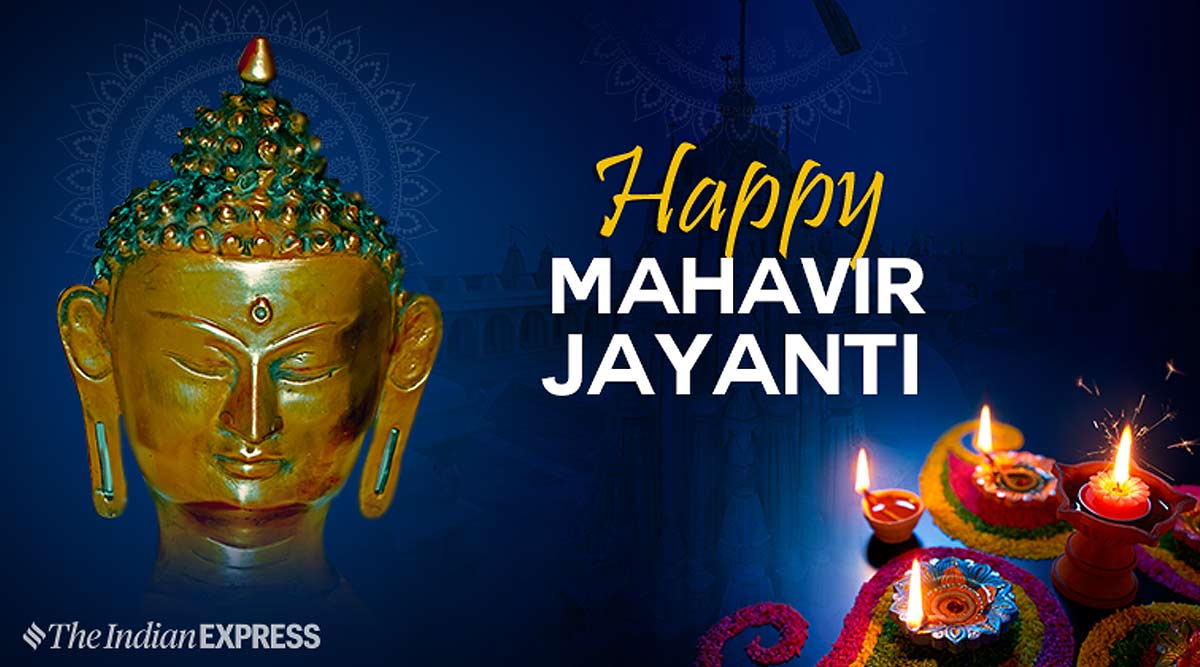MAHAVIR JAYANTI PHOTOES AND INFORMATION
Mahavir Janma Kalyanak or Mahavir Jayanti is one of the most important religious festivals in Jainism. It celebrates the birth of Mahavir, the twenty-fourth and last Tirthankara of present Avasarpiṇī.[a] As per the Gregorian calendar, the holiday occurs either in March or April.[3] It is also known as 'Veer Teras,' highlighting the 13th 'Sud' day of the Chaitra month of the Jain Calendar
BIRTH
According to Jain texts, Mahavir was born on the thirteenth day of the bright half of the moon in the month of chitra in the year 599 BCE (Chaitra Sud 13).[4][5]Most modern historians consider Kundagram (which is today's Kundalpur in Champaran district of Bihar) as his birthplace.[6] Mahavir was born in a democratic kingdom (Ganarajya), Vajji, where the king was chosen by votes. Vaishali was its capital.[7]
Mahavir was named 'Vardhamana', meaning "One who grows", because of the increased prosperity in the kingdom at the time of his birth.[8] In Vasokund, Mahavir is revered by the villagers. A place called Ahalya bhumi has not been ploughed for hundreds of years by the family that owns it, as it is considered to be the birthplace of Mahavir
/
WHO WAS LORD MAHAVIR?
Lord Mahavira was born into a noble family in Bihar, India during the 4th century BCE. During his life, Lord Mahavira was known as Vardhamana. In many ways, Vardhamana is similar to Buddhism’s Siddartha Gautama.Like Siddartha, Vardhamana left his comfortable home to find truth in the world after being sheltered from the outside world. After mingling with people from various cultures and backgrounds,Vardhamana learned much about the world and the sources of suffering. Eventually, Varhamana decided to focus his efforts on fasting and meditation.Through this process, Varhamana found enlightenment. He discovered that humans must eliminate greed and their connection to worldly possessions to end their limitless pursuit of desires. With his knowledge, Varhamana journeyed in India and other areas of Asia to spread Jainism. During this time, Varhamana’s kingdom experienced a period of extreme prosperity.
Jains participate in many activities that allow them to bond with their family members and show respect for Lord Mahavira.
Procession: One of the most popular activities for Mahavir Jayanti is the procession an idol of Mahavira. This activity involves Jain monks carrying a statue of Mahavira throughout the streets on a chariot. During this parade, communities gather to recite special rhyming prayers, or bhajans, that honor Mahavira
Statue Washing: People often wash statues of Mahavira with water and fragrant oils. This symbolizes the purity of Mahavira. It also serves the practical purpose of cleaning the beautiful religious statues for regular worship during the year.
Visit Temples: During Mahavir Jayanti, people from across the world visit Jain temples in India. In addition to visiting active temples, people also go to ancient historical sites that are related to Mahavira and Jainism. Some of the most popular locations are Gomateshwara, Dilwara, Ranakpur, Sonagiri and Shikharji.
Donations: To demonstrate their humble lifestyle choices, many Jains donate money, food, and clothing to temples during Mahavir Jayanti. The monks often take what they need and donate the remaining items to less fortunate people.
TRANSMIGRATION OF CORONA VIRUS

Comments
Post a Comment